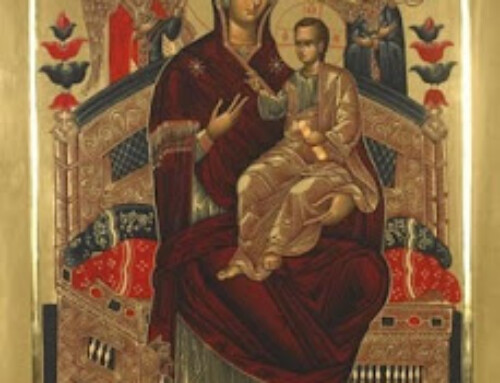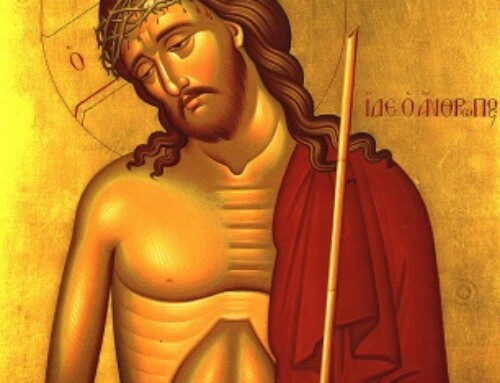Word Magazine June 1983 Page 45-46
EDUCATION
Rev. Dr. Joseph Allen, Th.D.
I would like to begin this chapter on education by turning to the development of the person, before those particular “things-to-learn.”
To begin with, one cannot forget that each person is indeed an individual, a person born in the image of God. No two persons are exactly alike. This, of course, does not mean that a child does not learn by imitation. Our individuality is learned through a dynamic communion with our world and environment, and much that we come to internalize and own as part of our person, comes by way of imitating those in that environment. It is this truth of the individual-in-relationship which distinguishes communion from collective. In a collective, individuality is wiped out; it is built upon the atrophy of the person, and the distinguishing core of the individual, the image of God, is blurred into a mass psychology.
This is a crucial point for parents to remember, even at the earliest stages of their children’s lives. Why do I say that? How is it relevant to the parental task?
Obviously the roots of such problems rest in those very early years of life when we hardly can speak of “thinking,” as much. Perceptions precede conceptions; we feel, smell, taste and see well before we are totally aware of what we are feeling, smelling, tasting and seeing. Nevertheless it is learning — perhaps the deepest kind of learning. This learning-by-perception is intuitive learning — that level of communication which perhaps interprets all the incidentals which follow it. By the time we are two years old, we will have participated in literally millions of such transactions by which we perceive things in life.
What do we learn by such perception and intuition? We learn who we are! We learn about ourselves. We learn that we are valuable and wanted. This is the identity question which is crucial to all education. Our relationships with our parents have always been shown to be at the base of such a life-lesson. Is it no wonder that the icon of the Theotokos with the Christ child touches us so deeply? But how does it actually happen?
This maternal matrix, this original verification of life (which incidentally is made up of both mother and father) is activated when the child is fed, cuddled, touched, talked to, cleaned, clothed. The child perceives that he is cared for, that he is valued. He begins to trust that his own special life needs will be met. The establishment of this trust requires sameness and continuity of schedule, in terms of feeding, for example. It is a qualitative presence that the child perceives through such regular sameness; he can count on someone being there: “Mother will care for me.” There is simply no more harmful experience in the life of a human than parental dysfunction and neglect. One never learns to “care for” unless one is “cared about.”
Here is that deep learning: faith is trust. In whom I have faith, I trust. Faith is not only belief (it is that, but not only that); one has faith in God when he trusts Him, when he is willing to surrender himself to this trust in God. By perception the child learns this trust in these primary days of his development; as the person grows and can form concepts, it is this trust that is translated into trust (faith) in God.
Relate this, for example, to the act of receiving the Holy Eucharist in the Liturgy. Here we can truly grasp how deep this learning-by-intuition is! How do we approach this Food-for-Life (Salvation)? We approach it with the same trust as the child, defenseless and with our mouths open. Our arms are folded to our body; we are not defending ourselves. We see, smell, hear — we eat — the Food-for-Life. But we learned what that truly means when we were but children, searching in trust for the food from mother. This lesson rests in the deepest recesses of our souls — and it is learned in our childhood. Every time we approach the Eucharist, if we are sincere, those deep lessons — when we first learned what food meant to us — are remembered and activated. It is no wonder that our mother who gave us this food-for-life is now the Mother — the Church — who continually gives us this Food-for-Life! St. John Chrysostom recognized this when he said, “We are raised on the blood and milk of our Mother, the Church.”
Some dangers of course are always involved. As we speak of communion and learning-by-perception, we must remember again the problem of the collective to which we directly referred at the outset. In the collective there is no individual. Parents can cause this phenomenon if they come to believe that they “own” the child or that the child is an “extension” of their bodies: mothers, having borne children in utero may mistakenly believe that the fetus is part of their own bodies, with no individual identity of its own. This, of course, is not true; even from the moment of conception, this is a separate person, formed in the image of God that is in utero. Mothers and fathers must never believe that they own anybody else. They may cooperate with God’s presence in helping to shape a life, but they never own that life.
Naturally this primal relationship does finally come to an end, although it is impossible to say when. Children, through increased consciousness, come to see their lives as objective entities. They realize that they are capable of making decisions, of building up and knocking down (which they learn from their toys), of being in conflict, of wanting something that another child has. All these, and many more, tell the child about his individuality. When this begins to take place, he will begin to form concepts.
Concepts are learned. Concepts, although preceded by percepts, are directly learned by imitation. If a child sees parents respecting others and himself, he will learn to respect others and himself. If he sees them praying, he will know that prayer is important. If he sees in them reverence for the Orthodox Faith — for receiving the Holy Eucharist, for confessing regularly, etc. — he will learn of its importance. All such lessons he will internalize; they will be integrated into what he believes should be his own being.
Remember that sometimes parents must be deliberate: tell your child that you are pleased when he does the right thing. Tell him directly, explicitly. (Emphasis must be much more on the “do’s” rather than the “don’ts.”) And show him, again explicitly. “Here is how you cross yourself.” Go through the motions with him. Showing will underscore the importance of what you are explaining.
Expect things from your child, but make sure the expectations are realistic. St. John Chrysostom said, “The teacher cannot move on with a new lesson until the previous one has been firmly fixed.” If your expectations are constantly too stringent, not only will you be disappointed but the child, who wants only to please his parents, may be devastated with his failure. (It is true that a child does not need to learn how to fail, since we all do. But this he will learn on his own and will hardly need our help! Instead, when failure comes, he will need the strength to go on, i.e., not to be devastated by it.)
Teach him to share and forgive. This is how he will grow as an individual in a community. One who cannot share and forgive cannot commit himself to any community, no less to that Community in Christ which is built on sharing and forgiving.
In the end, parents must not forget that children come to judge themselves by how parents judge them, that is, with what concern we have for them. It begins with us. And we? We will be judged not by what we say or do. We will be judged by what we are.
(Chapter 8 of a series called “The Cradle Roll”)




